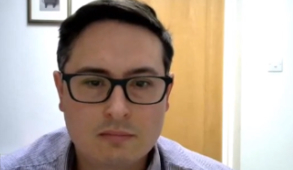NHSE seeks to boost efficiency and productivity
Peter Ridley (pictured), NHS England deputy chief financial officer – operational finance, acknowledged the return to 2019/20 productivity levels and the efficiencies needed to balance the books were ‘a big ask’ of systems.
Measured by a relatively crude version of productivity – cost weighted activity versus cost growth –the NHS is currently well below the same period in 2019/20. ‘We know there are very good reasons for that, and we know there’s a big differential across the country,’ Mr Ridley said.
Speaking at the HFMA conference, Financial sustainability – getting on the front foot for 2023/24, he insisted the NHS was always one of the most efficient health systems pre-Covid. But, even then, there was a challenge to address efficiency and productivity.
Now, the NHS faced a range of difficulties affecting productivity and efficiency, and the response should be local and national. With the move to integrated care boards (ICBs) on 1 July, the centre wished to ensure ICBs are empowered to do what’s right for their local populations.
However, some things should be done nationally – actions that require a critical mass or one approach, Mr Ridley said. NHS England has an efficiency programme leading on these actions, which have been determined with input from system leaders.
The national efficiency programme could provide ‘more and better data’, as well as leading on medicines value, standardisation, and providing guidance on delivering savings on temporary staffing, for example.
Expanding on the work of the temporary staffing workstream, Mr Ridley said agency staff were an important part of the staffing mix in the NHS. But there was a need to reduce the use of agency to boost efficiency and productivity.
There had been a focus on agency spending around five years’ ago, which focused on national controls, price caps and framework agreements. NHS England had signalled a return to these measures in July this year in a letter on setting ceilings on system expenditure.
‘Collectively we significantly reduced agency costs in the late 2010s, and we would like to learn from that, which is why we’ve taken some of the actions we have,’ Mr Ridley said.
‘It is difficult to take this action when we are under the degree of pressure we are, and we know there are gaps in the workforce so it might seem strange to be talking about agency spend. We got on top of this before and we really want to support people to do this.
‘When we talked to chief finance officers, and others in NHS finance, they felt it would be useful to have a national set of expectations and national controls so that when we did use agency we would feel we’ve got value for it.’
The July measures were the first steps in reducing agency costs and were based on systems’ individual plans. One or two organisations have almost no agency use, and have worked hard on local collaborative banks. The temporary workforce workstream is keen to learn from these organisations, and he feels putting their work on a national scale could be helpful.
He added it was important to share innovations, suggesting the One NHS Finance innovation programme as a good way of sharing and discovering improvements.
Mr Ridley said in some regions since April 2019 there had been a 16% increase in workforce. ‘I don’t think any of us can describe well enough where that workforce is and what it is doing. I’m keen we continue to work through this. Can we describe our permanent workforce as it is already and then get it to where it needs to be? We need to have a better understanding of the growth in our workforce and let’s make sure we are getting absolutely the best out of the workforce we have,’ he added.
Outlining the cost pressures faced by the NHS, Ed Waller (pictured), deputy chief financial officer – strategic finance, said the headline efficiency requirement in England was 2.2% in 2022/23, but at local level it could feel tougher.
‘The level of Covid funding reductions means that though we have a 2.2% efficiency target, it feels like 4.6% as we try to take out the extra costs,’ he told the online conference.
Yet Covid remained a pressure for the NHS.
‘We had more Covid patients in hospital this summer than the previous two summers combined. Covid is still very much there, having a variety of impacts on bed use. That has an impact on our financial performance.’
The NHS has also seen an increase in staff sickness, which has led to an increase in the use of temporary staff that could cost up to £1bn. New infection prevention and control measures have also adversely impacted on productivity.
On top of these Covid-related pressures, Mr Waller said inflation had added up to £3bn in recurrent cost pressure. The pay deal had generated unfunded costs of £1.4bn. This had been met partly by reprioritisation, but this will also be carried through into 2023/24.
The service was also affected by non-pay inflation, driven by rises in energy prices and estates costs. NHS England had put in £1.5bn in spring 2022 to help the NHS cope with these increases.
Looking ahead to 2023/24, he said that with the Bank of England forecasting inflation of up to 9%, significant increases in non-pay costs are likely.
‘We need to give people realistic assumptions on inflation in the planning guidance, but that’s difficult to do prospectively,’ Mr Waller said. ‘We will try to do our best on that front.
‘With Covid and the possibility of a difficult flu season over the winter, it’s always difficult to know where these things will go. This year [2022/23] we’ve tried to react during the year to the realities of life, and in spring we had to reflect rising inflation with the additional £1.5bn. I think we’ll have to reserve the right to see how things are going in 2023/24, and make plans accordingly.’
Related content
The value masterclass shares examples of organisations and systems that have pursued a value-driven approach and the results they have achieved.
This webinar series offers colleagues of ICS organisations the opportunity to discuss common priorities, challenges, and successes within their field.